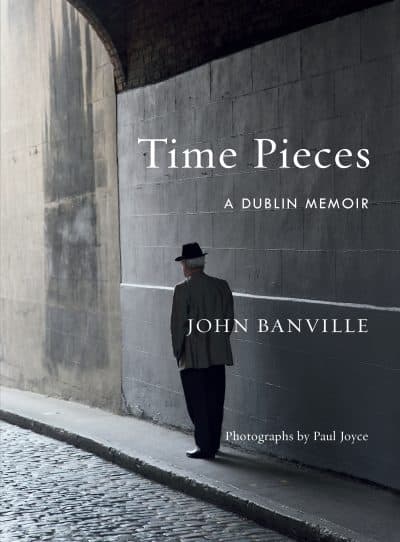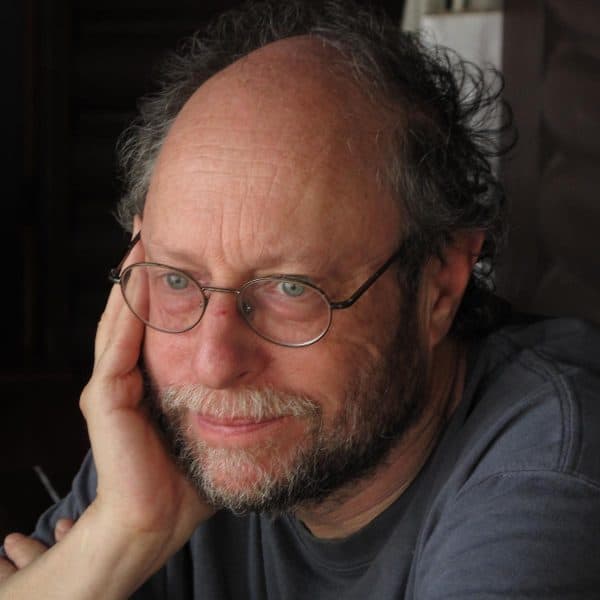Advertisement
REVIEW
John Banville Is An Artful Tour Guide In His Dublin Memoir, 'Time Pieces'

The curiosity that we have about the lives of artists knows few bounds. That curiosity seems an integral, if not particularly admirable, part of the cultural and political times. John Banville’s “Time Pieces: A Dublin Memoir” is a sly wink to our need to know more about the artist than the art, or at least to apply the real-world events of the writer’s life to the worlds that the writer creates.
But Banville pretty much subverts any thoughts about brushes with greatness, salacious or otherwise, though there are some cameos in the book. There aren't stories of hobnobbing with celebrities, though the spirits of Joyce and Beckett appear throughout the compact 200-pager, published by Knopf. His traveling companion is a mysterious fellow named Cicero, of whom we learn only anecdotal information.
Banville, these days, seems to be in a restless, experimental mood. His last Black book was not one of his superb Quirke crime novels set in 1950s Dublin but one set in Prague in the 1590s. The last Banville, “Mrs. Osmond,” was a continuation of Henry James’ “Portrait of a Lady,” rather than one of his more experimental, poetic exercises.
And now, a memoir, or anti-memoir. But “Time Pieces” is a charmer in its own Banvillian way, and we are able to see, here and there, how Banville’s Dublin shaped Banville’s writing. I’ve often been struck, for example, how his writing often lacks a sense of place. He tackles that head-on saying at one point, “I have never in my life paid much attention to my surroundings wherever I found myself — artistic attention, that is.” And, at another point that “Joyce had seized upon the city for his own artistic purposes and in doing so had used it up.”

Banville, with help from Cicero as well as photographs by Paul Joyce (who did rub shoulders with Beckett) does take us around to Dublin sights, both famous and not so much. This probably isn’t the first book a tourist should look to, but it’s one that I’ll be sure to bring along with Rick Steves or Fodor.
Until I set sail, it’s Banville’s gift for storytelling that will stay with me, along with his trademarks concerns, such as digs at the church. He talks about a priest ordering his mother to stop reading the thoroughly innocent magazines that she treasured. Despite Banville telling her that the priest “was a fool,” she refused to buck the church. Leading him to conclude:
My mother must have been in her forties at that time. Can one imagine now a middle-aged woman succumbing to such an absurd and petty commandment, even in Ireland, where even still, among many Catholics, the Church despite all its efforts has not succeeded in discrediting itself entirely?
There are also Banvillisms about the passage of time, the afterlife – “a horrible possibility” – and anti-PC observations about art and contemporary architecture. “If this is gentrification,” he and Cicero agree, “then please, let us have more of it – lots more.”
My favorite bit of Banville in “Time Pieces,” though, is the story of a lost love He grew up in the remote town of Wexford, but moved in with his aunt in Dublin in the early ‘60s, presumably in his late teens since he’s 72.
He fell in love with a young woman named Stephanie who just wanted to be friends — though not quite. By the time he realized that not quite would mean not ever, he was nursing a broken heart. But that journey has both the familiarity of personal experience and the wistfulness of a Chekhov short story.
And, as with Chekhov, wistfulness is not nostalgia. Both in experience and in art, it is harder-earned and emotionally more taxing. And, as with everything Banville does, thoroughly more enduring, satisfying and artful.
